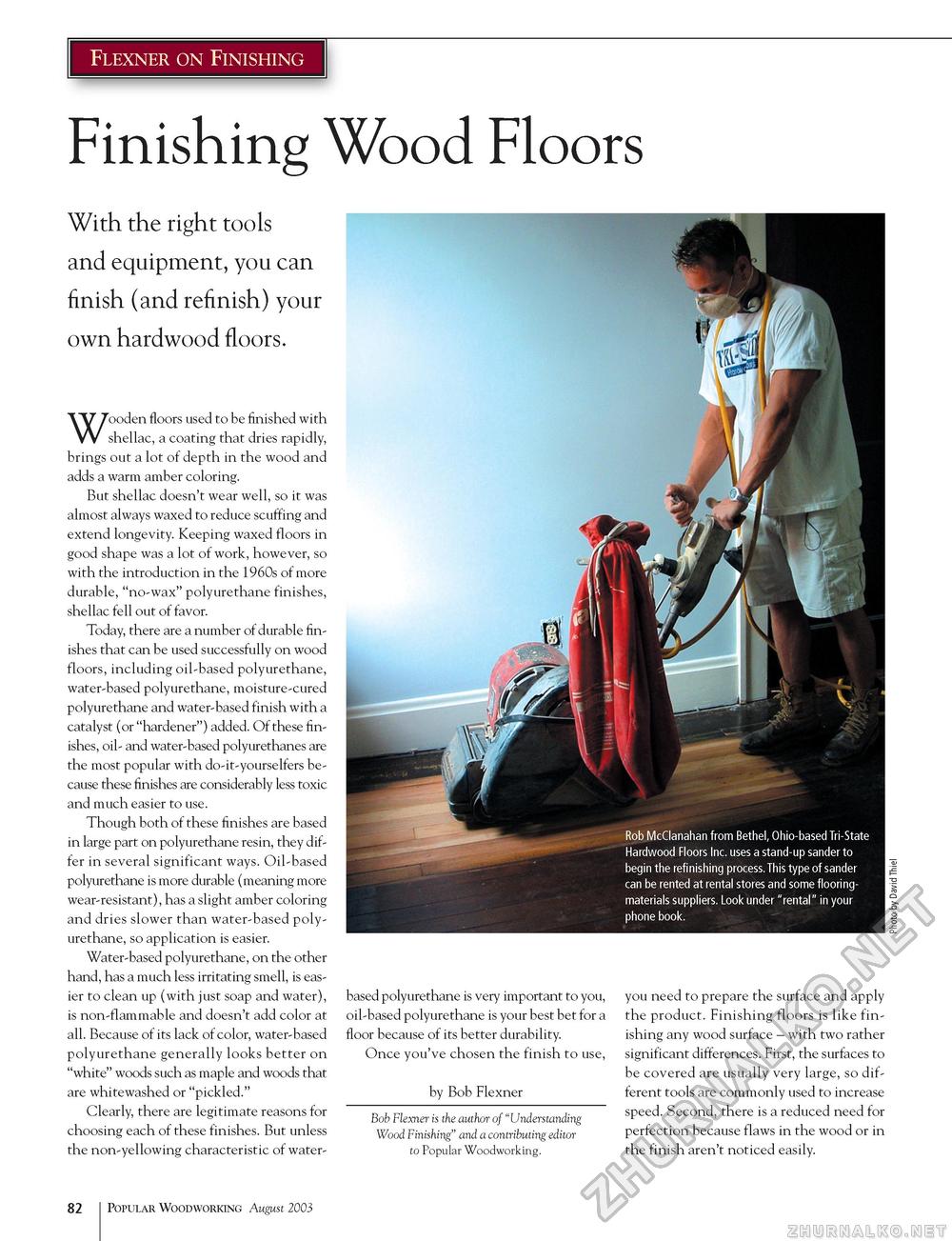Popular Woodworking 2003-08 № 135, страница 84
Flexner on Finishing Finishing Wood Floors With the right tools and equipment, you can finish (and refinish) your own hardwood floors. Wooden floors used to be finished with shellac, a coating that dries rapidly, brings out a lot of depth in the wood and adds a warm amber coloring. But shellac doesn't wear well, so it was almost always waxed to reduce scuffing and extend longevity. Keeping waxed floors in good shape was a lot of work, however, so with the introduction in the 1960s of more durable, "no-wax" polyurethane finishes, shellac fell out of favor. Today, there are a number of durable finishes that can be used successfully on wood floors, including oil-based polyurethane, water-based polyurethane, moisture-cured polyurethane and water-based finish with a catalyst (or "hardener") added. Of these finishes, oil- and water-based polyurethanes are the most popular with do-it-yourselfers because these finishes are considerably less toxic and much easier to use. Though both of these finishes are based in large part on polyurethane resin, they differ in several significant ways. Oil-based polyurethane is more durable (meaning more wear-resistant), has a slight amber coloring and dries slower than water-based poly-urethane, so application is easier. Water-based polyurethane, on the other hand, has a much less irritating smell, is easier to clean up (with just soap and water), is non-flammable and doesn't add color at all. Because of its lack of color, water-based polyurethane generally looks better on "white" woods such as maple and woods that are whitewashed or "pickled." Clearly, there are legitimate reasons for choosing each of these finishes. But unless the non-yellowing characteristic of water- based polyurethane is very important to you, oil-based polyurethane is your best bet for a floor because of its better durability. Once you've chosen the finish to use, by Bob Flexner Bob Flexner is the author of"Understanding Wood Finishing' and a contributing editor to Popular Woodworking. you need to prepare the surface and apply the product. Finishing floors is like finishing any wood surface - with two rather significant differences. First, the surfaces to be covered are usually very large, so different tools are commonly used to increase speed. Second, there is a reduced need for perfection because flaws in the wood or in the finish aren't noticed easily. 82 Popular Woodworking August 2003 |








